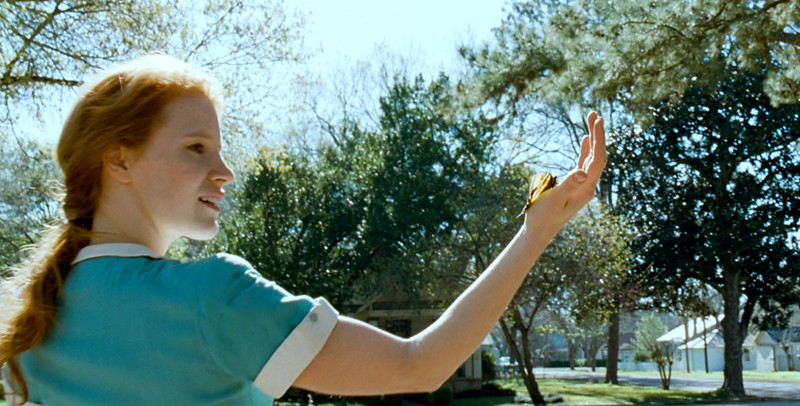
Mankind and nature, the relationship between the human figure and the landscape has accompanied the visual arts since the first cave paintings, all the way through the Dutch landscapes painters, the Romantic age with its theorizations of the sublime, of the individual being overwhelmed but at the same time embraced by the absoluteness of nature.
This tradition has been carried on by cinema, that through framing, cinematography and the eternal juxtaposition of the human figure and the landscapes has infused the representation of nature in films with deeply political, psychological, spiritual and allegorical connotations.
To film a landscape is not just showing the actual physical qualities of that particular spectacle, but it is an evocation of states of mind and metaphorical subtexts that are deeply rooted in our artistic tradition.
Following the Nietzschean idea that man is constantly mirroring himself into things it is clear how the landscapes, when a human figure is in contact with them, create a bridge between the interior and the exterior, the natural and the anthropocentric, opening the door to epiphanies and revelations that complete and expand the psychology of characters and the wider meaning of a film. This mute dialogue between the natural and the human element has some of its best ever examples in cinema.
1. Aguirre, Wrath of God (Werner Herzog, 1972)
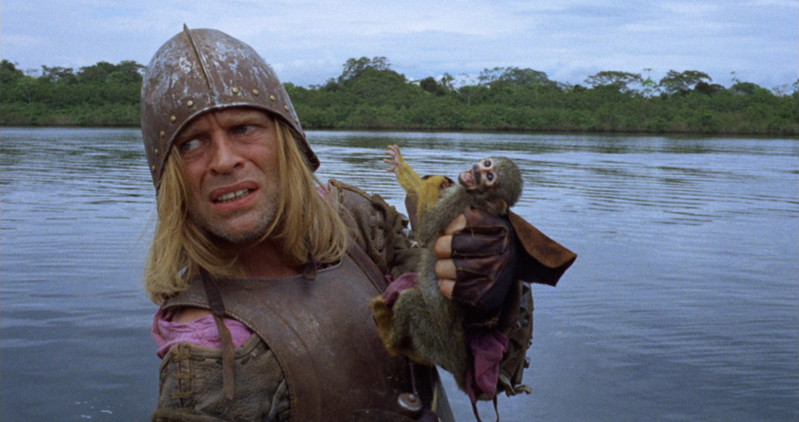
Werner Herzog has spent his cinematic life looking for the ecstatic truths that can only be grasped at the extremes of human existence. In “Aguirre, Wrath of God”, he follows the expedition of a group of conquistadores in search of Eldorado, in the Incan empire. The film was shot in the Peruvian rainforest in five weeks. Herzog, 30 at the time, displays a nihilist view of a chaotic and crazy nature that swallows humanity in its abyss of madness.
The opening shot of the film shows a group of men cautiously descending a mountain through a narrow path, an otherworldly mist surrounds the landscape and the action is punctuated by the eerie and surreal soundtrack by German band Popol Vuh, that uses Mellotron and synthesizers to create an electronic tapestry that creates a suspension between enchantment and terror.
There is no peaceful feeling to be found in this sequence, as the characters always appear unstable and dangerously close to the precipice and the sea of mist, on the brink between being and nothingness, and the hallucinatory sounds of the score create a dreamlike meshing of the tangible and the intangible.
There is no trace of the imperialistic fascination with exotic lands that had dominated mainstream cinema (in movies like the James Bond ones) in the previous years; Herzog directs a colonialist nightmare that is much closer in tone to Conrad’s Heart of Darkness, where civilization descends into the deep of nature and engages in a fight that drives the characters insane, because nature is evil and destructive.
Another natural element that haunts the film is the river, with the dark and tumbling waters, the descent of which symbolizes the descent through the hellish heart of nature. The river is impetuous and threatening, a depiction of nature as a force that is brutal and merciless; when the river gets quiet, it becomes a symbol for the calmness of death. This kind of imagery has had major influences on later films like “Apocalypse Now” and “Valhalla Rising”.
The final sequence of the film sees the main character, played by Klaus Kinski, trying to grab hold of one of the many monkeys that frantically run all over the boat, again as to symbolize the indifference and the unruliness of nature.
A tour de force of negative metaphysics, “Aguirre, Wrath of God” reveals the horror and senselessness within nature through a landscape that is oppressive and impenetrable as the jungle, mysterious and oneiric as the misty mountains, and full of pulsing and imposing strength as the river.
2. Shadows of Forgotten Ancestors (Sergei Paradjanov, 1965)
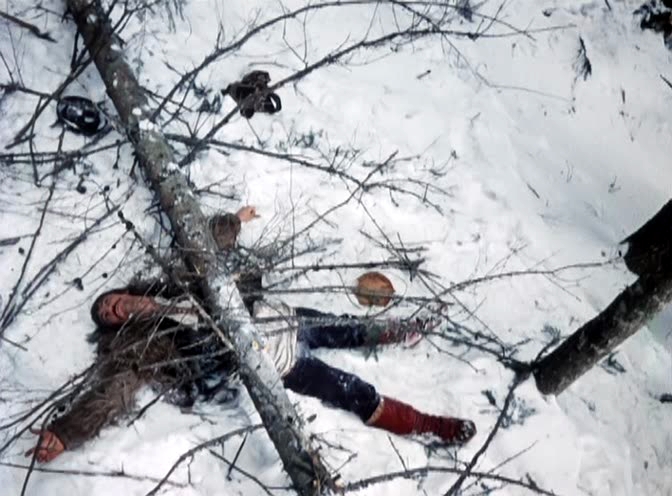
To tell the tale of a forbidden love set in an unspecified time period in the Hutsul society, a society that retains some pretty archaic costumes and is geographically collocated between northern Romania and Ukraine, the great Armenian director used a depiction of the landscape that was inspired by Medieval and Renaissance tableaux vivants.
This is evident in the first sequence of the film that owes a debt, in the composition of the snowy landscape and the trees, and the miniaturizing effect they have on the people, to Pieter Brueghel the Elder and other Dutch landscapists.
During the film, the landscape oscillates between the hostile and the idyllic, as the seasons of nature tend to coincide with the seasons of the life of the main protagonist, Ivan, who falls in love with Maritchka, and as their young love first blossoms, the landscape celebrates them with vivid colours and the golden reflexes of the sun on the grass and on the waters where they happily play, in a pastoral sequence that echoes the paintings of Fragonard.
The camera glides gently over peaceful small water streams as the light peeks through the trees. When tragedy strikes, it does so as the landscape turns to a grey and smoky color pattern, an almost eclipse-like biblical scenery as the Earth looks burnt and wounded, and even the river takes the color of the ashes.
As Ivan’s life descends into tormented loneliness, the landscape becomes preponderantly grey, brown and white; the harshness of it is a reflection of the isolation and alienation of Ivan’s character, as nature takes on a spiritual meaning and participates to the human feelings of grief and loss, and it is haunted by the spirit and the memory of Maritchka.
At one point, we even see Ivan looking at a water surface and seeing Maritchka as if she was reflecting in the water, a quintessential case of man looking through himself by looking through nature.
3. Ran (Akira Kurosawa, 1984)
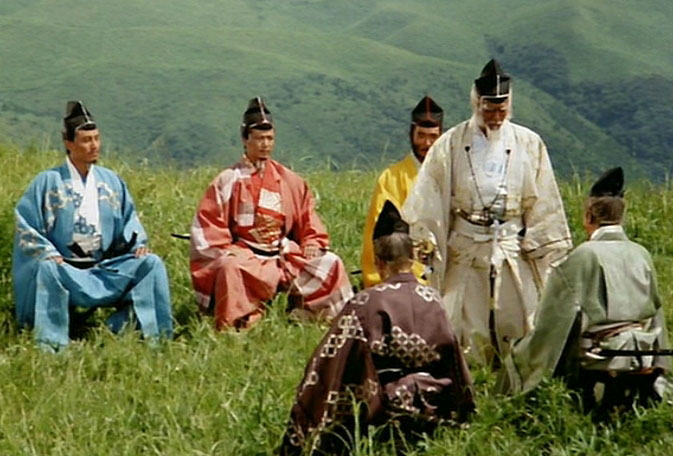
Ran is loosely based on King Lear, and it is the story of three brothers who send the kingdom into a terrible war because of their arrogance and greed when it comes to dividing the inheritance of their old father. Kurosawa shot his 1984 epic on Mount Aso, Japan’s largest active volcano.
The director had many miles of green fields, hills, and valleys to display enormous armies. The landscape makes his first appearance in the long opening sequences when the conflict between the father and his three sons erupts, and it is displayed in a series of spectacular vistas that echo western movies, that used desolated scenery to illustrate moral desolation.
Kurosawa does the same and adds a series of shots of blood red skies that illustrate the themes of passion, guilt, greed, and war. The vastness of every landscape shot accentuates the feeling of nullity that inhabits mankind, and the feelings of loneliness and hopelessness.
On a great cinematic stage of grass, dust and rocks, Kurosawa shows man at his most brutal in a vast and arid landscape that is unforgiving and the desolation of which emphasizes his failings.
4. Clouds of Sils Maria (Olivier Assayas, 2014)
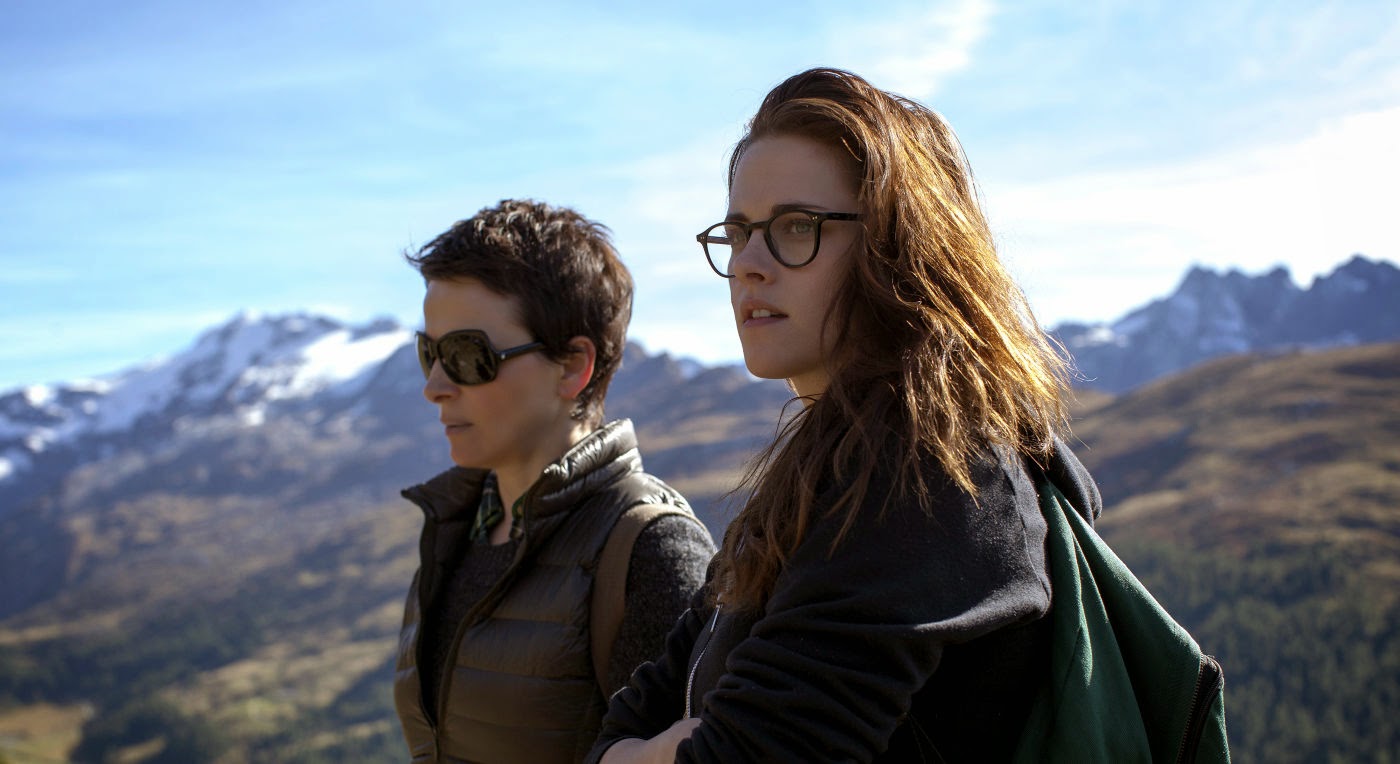
In Clouds of Sils Maria, the landscape is the universe, as it is not only the physical space of the events, but also the metaphorical space of time and memory. Juliette Binoche plays an actress that isolates herself with her secretary, played by Kristen Stewart, to rehearse her role in the play “Maloja Snake”.
When she originally acted in the play, she played the young woman, Sigfried, who seduces the older Helena, but now that she has been cast as Helena, and coincidentally the director who originally cast her has died a few days before, she has to come to terms with her inevitable aging, and with the idea that the play might not be about what she thought it was in the first place.
The landscape that Assayas shows is a peaceful corner of the Swiss Alps, that allows the film to breath after the softly lit interiors of the beginning. The natural setting is influenced by Bergman, as the mountain becomes an “existential theatre”, where the two figures, that come to symbolize Binoche’s character’s old and young age, confront each other.
The entire setting is photographed in a way that is meant to achieve a Wagnerian serenity, to create a sense of operatic tragedy, doomed passions and solemnity. A crucial element of the landscape is one that is barely seen but constantly evoked and present in the film, and that is the “Maloja Snake”, a weird cloud formation that resembles a snake slithering through the mountain peaks.
The characters look for the snake, as it becomes part of the scenery despite not being physically there. Because the play is named after the cloud phenomenon, and the play ideally captures a particular moment in the life of Binoche’s character, the “Maloja Snake” becomes a symbol of time and lost youth.
The misty quality of the snake also becomes a symbol of the forgotten, the unknown and perdition. When we finally see the Maloja Snake, in a sort of Beckettian twist where Godot finally shows up, Kristen Stewart’s character, the film’s carrier of youth, disappears, never to be found again.
The landscape in the film is never harsh, it is gentle, the sun softly caresses the rocks and the lakes, the snow falls quietly, the clouds glide inexorably, as to represent the inexorable gentleness of the decline of the protagonist, the slow but steady passing of time, the almost unperceived shift between youth and old age, the tender touch of memory and the bittersweet contemplation of death.
5. Greenery Will Bloom Again (Ermanno Olmi, 2014)
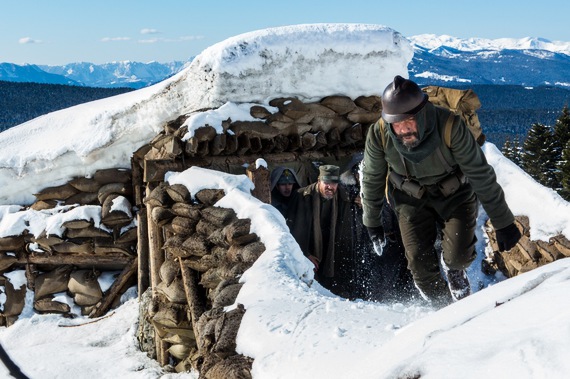
Ermanno Olmi’s First World War drama about a group of Italian soldiers stuck in the trenches in freezing weather in Asiago, in the mountainous Trentino region, is all based on stasis, which is best conveyed through the motionless white landscape that dominates the film. The first shot is almost blinding, as the snowy mountain and white sky are displayed in all their death-like immobility.
The landscape feels like it is asleep, both embracing the desperation of the soldiers in the last moments of calm, waiting for death or salvation, and at the same allegorically representing the “winter of the world”, the absence of morals, the absence of humanity that is war.
The landscape has to be quiet to give voice to the thoughts and the gravity of the situation. The undefined otherness of the snowy mountain, alienating and unclassifiable, takes the film to a level of universality, as it was intended as a commemoration of the hundredth anniversary of the Great War and a memento for all countries and not just circumscribed to Italy.
The snow that covers the trenches combines the element of protective softness of the natural elements and the heavy calmness of death that afflicts the soldiers that are soon to be brutally slaughtered. The wintery landscape becomes deeply elegiac, as a small Japanese poem that aims to capture a minuscule instant, a brief natural vignette to represent the universal condition of mankind.
The silence that could be broken at any second becomes a symbol of the precariousness of human life, especially in war. The best way to describe the emotions conveyed by Olmi through the landscape is Ungaretti’s poem about the Great War : “Here we are/like leaves from trees/in autumn”.
6. Still the Water (Naomi Kawase, 2014)
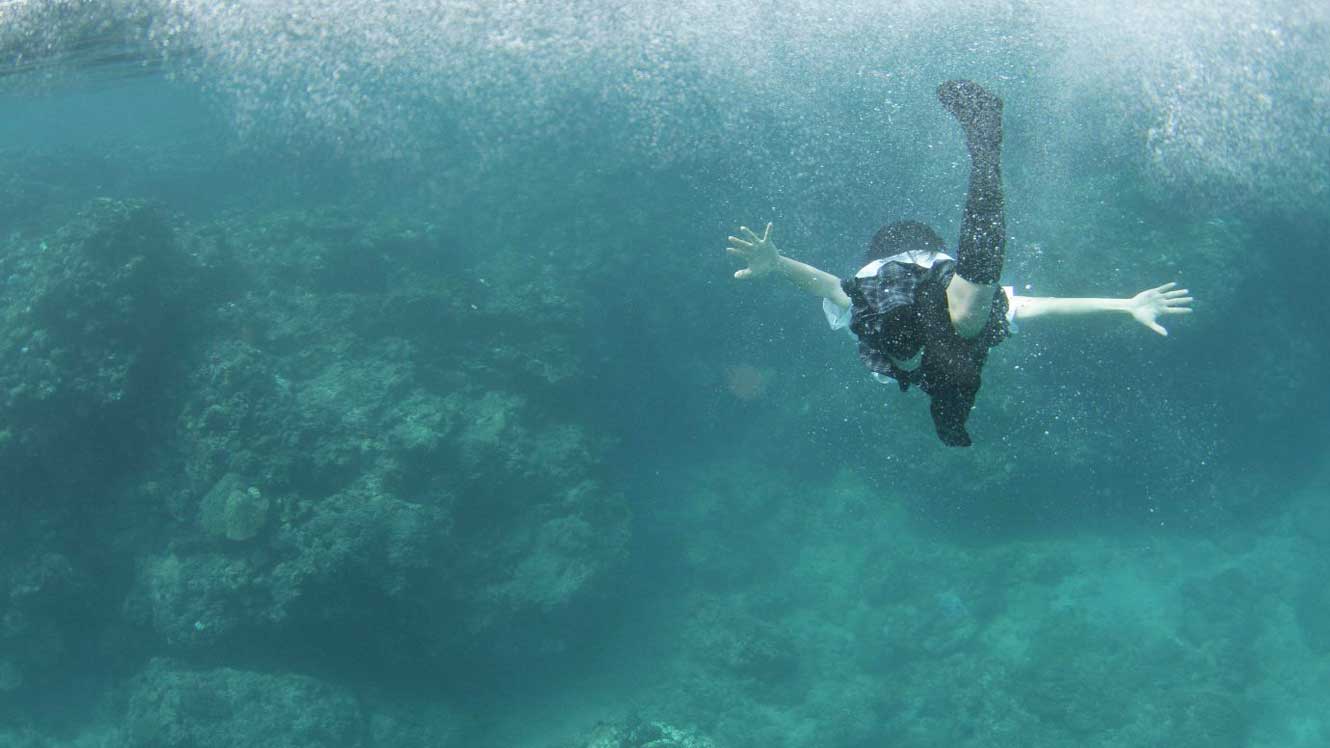
Still the Water is a film about the contemplation of death and the acceptance of man’s place in nature. This is explored with the typical serenity of the Japanese tradition, through their ability to conciliate the microcosm of simple people and the infinity of the cosmos.
The film respects the tradition of “Shomingeki” cinema, the cinema of small things, made famous by Ozu, and it is full of simple people, small events and intimacy, but all of this is countered by the titanic, ominous presence of the ocean, which is the key of the film.
The first shot of the film is a series of waves crushing on the beach, menacing, as to represent the reverence and fear that nature imposes on the human soul; throughout the film, a marine breeze constantly blows gently against the characters, creating, through a sensorial connection, the communion between the finite and the infinite.
The crucial final scene represents the triumphant coronation of this union, as the two young characters, Kaito and Kyoko, find their place in the universe through their love, and are free from the fear of death, and this is celebrated through a naked swim in a bright blue ocean, the ultimate fusion between man and nature.
In the film, the ocean is the representation of the Absolute, of the ultimate truth of the universe, not intimidating but welcoming, as we are unmistakably and serenely part of it, part of it all.
7. Lawrence of Arabia (David Lean, 1962)
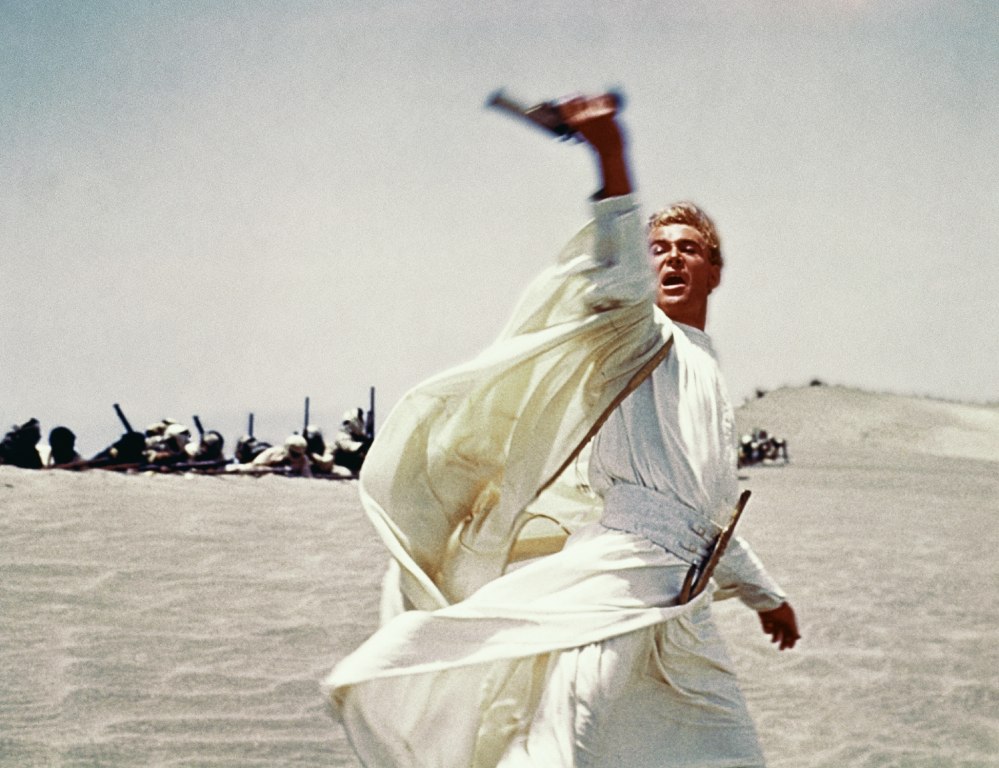
Lawrence of Arabia tells the story of T.E. Lawrence, with particular attention to his role in the Arab revolt against the Ottoman empire between 1916 and 1918, and it is a staple of modern epic cinema. The landscape, which is made up mostly of the stunning and evocative Jordanian and Moroccan desert, where the film was shot, is ambivalent in its spiritual and political role.
On the one hand, the desert is the dreamy setting of Lawrence’s look for his true self and his eventual ascension to a prophet-like role. The intense reds and yellows of the desert and the endless horizons confuse the notions of space and time and put minuscule human figures emerging similarly out of nowhere like mirages.
In this scenery, the protagonist is at the same time lost and found, the desert is a non-place where he is stripped of his former ideological notions and can be himself without impositions. Lawrence ascends to a divine status when he appears as a formless shadow against the desert sun, when he has become one with nature and more than a man.
The desert landscape also retains a political role, as it constitutes an example of “Third World wilderness”, an exotic and alien looking place where the imperialistic and secular western cultures inevitably clash with the impassibility and eternity of nature. We have the contrast between the infinite bareness of the desert, its austere tranquility, and the clanking, sci-fi looking, metallic machines of the Ottoman empire, who look like lunar exploration vehicles in a hostile environment.
The film shows us the contrast between the might of nature and her impassible look, and the hysteria and greed of mankind with its technological advance and its hubris. The clash, or in Lawrence’s case, the merging, of the human element with nature, is the heart of the film.